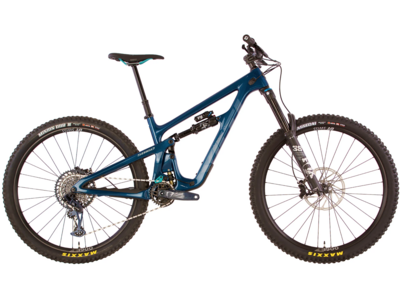SRAM's AXS components are as fancy as can be. Do they work better though? What's rad and what could be improved? Join Vital MTB Product Editor, Brandon Turman, in the video below for a deep dive into the world of wireless shifting, dropper posts, and his long-term impressions:
Strengths | Weaknesses |
|
|



Eagle AXS Highlights
- Wireless electronic shifter and derailleur
- XX1 and X01 versions
- Removable battery weighs 25g and is hot-swappable from derailleur to Reverb AXS
- Overload Clutch
- Trimmed and adjusted electronically
- “Secret Sprint” paddle for quick shifts
- Water and dustproof to IP69K international standard (can withstand pressure washing and immersion)
- Weighs 5 to 15g less than mechanical Eagle
- MSRP: $700 USD derailleur, $200 controller

Reverb AXS Highlights
- Wireless electronic dropper post and controller
- Post stays activated/open while holding the controller paddle
- System goes to power save mode when the bike is stationary
- Check battery life by pressing AXS button
- Single rail-retention bolt for quick saddle install and quick tilt adjust
- Updated internals for faster (non-adjustable) return speed
- Vent Valve Technology to reset post
- Waterproof to the IPX7 international standard (systems that require regular pressurized cleaning)
- Diameters: 30.9mm, 31.6mm, 34.9mm
- Travel: 100mm, 125mm, 150mm, 170mm
- Length: 340mm, 390mm, 440mm, 480mm (same as regular Reverb)
- Weighs within a few grams of traditional Reverb
- MSRP: $800 USD, includes controller

When I go back to mechanical drivetrains there is not a next-level, game-changing difference.
When I go back to a standard post, though, I miss the Reverb AXS for its precision and ease. The application of instant wireless technology makes a noticeable performance difference compared to cable or hydraulic remotes.




What's The Bottom Line?
There is no denying that these are luxury components and completely unnecessary to have fun on your bike, but man are they cool.
Overall, SRAM AXS works well as a system, combining wireless technology that is both reliable and nearly instantaneous to make things easier, faster, and a more natural extension of your body in many ways. You barely tap the controllers and the result is a more accurate shift or dropper adjustment. There are also fewer cables, which is sweet, and the potential for trickle-down is exciting.
For those who love data and devices, AXS is a dream thanks to AXS Web and various integration abilities. For those who don't, it's possible to use the system without thinking twice about it. While there are many conveniences when it comes to AXS, there are tradeoffs when it comes to dealing with batteries and apps.
After this test, the full AXS setup is going onto a new trail bike. I find that rides on the Transition Patrol are most often straight up, straight down, and after a year of riding it, I think the precision the AXS system offers – whether it's shifting under load or finding that perfect seat height – is much more fitting for a trail or cross-country bike where you see a lot of rolling terrain.
As for the Reverb AXS, is this the dropper perfected? It definitely seems like it.
Head to www.sram.com for more details.
About The Reviewer
Brandon Turman - Age: 33 // Years Riding: 18 // Height: 5'10" (1.78m) // Weight: 170-pounds (77.1kg)
"I like to have fun, pop off the bonus lines on the sides of the trail, get aggressive when I feel in tune with a bike, and really mash on the pedals and open it up when pointed downhill." Formerly a mechanical engineer and Pro downhill racer, Brandon brings a unique perspective to the testing game as Vital MTB's resident product guy. He has on-trail familiarity with nearly every innovation in our sport from the past several years and a really good feel for what’s what.
Video by Brandon Turman and John Reynolds







View replies to: Pros and Cons of Wireless? Long-Term SRAM AXS Review
Comments